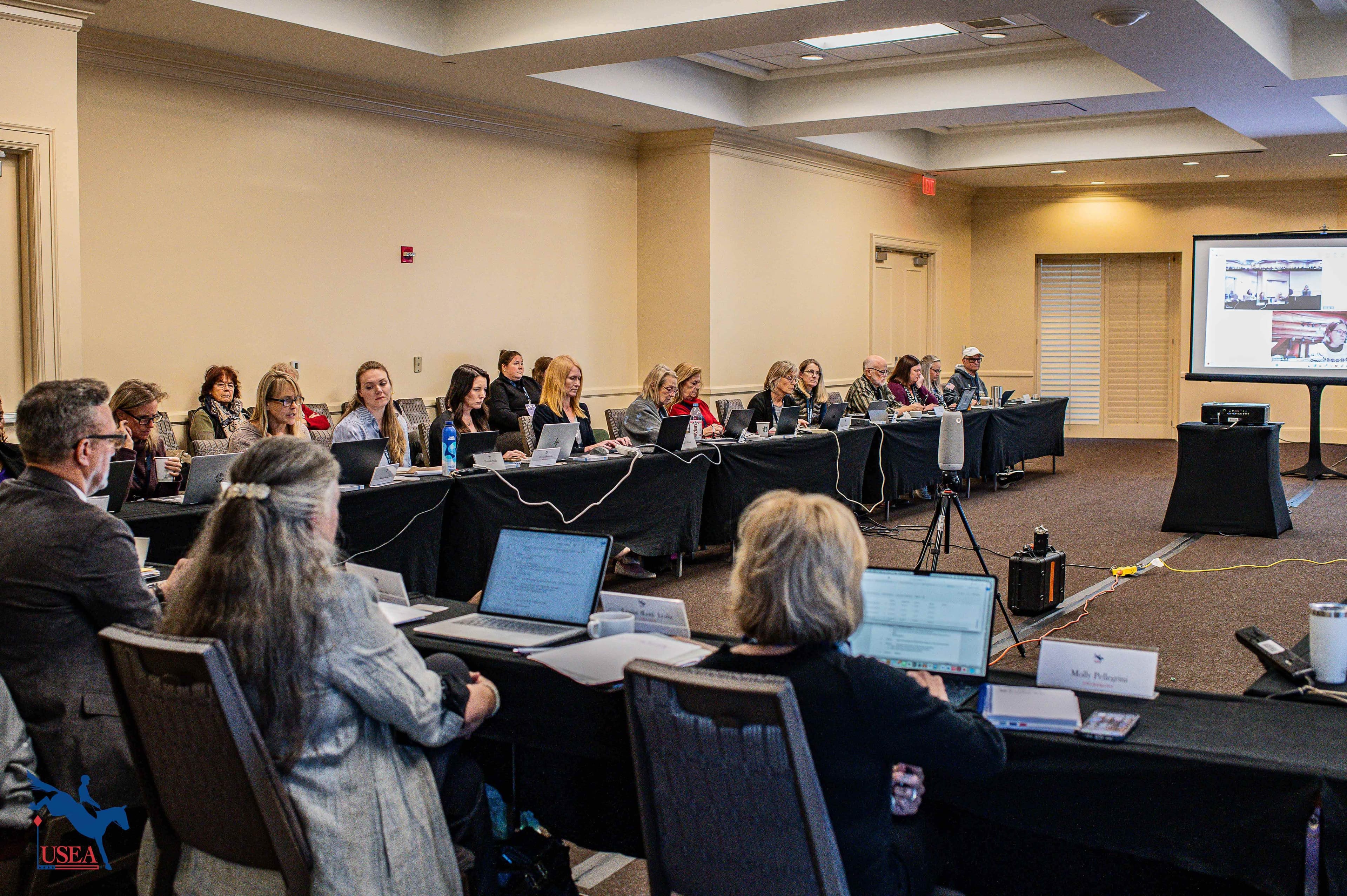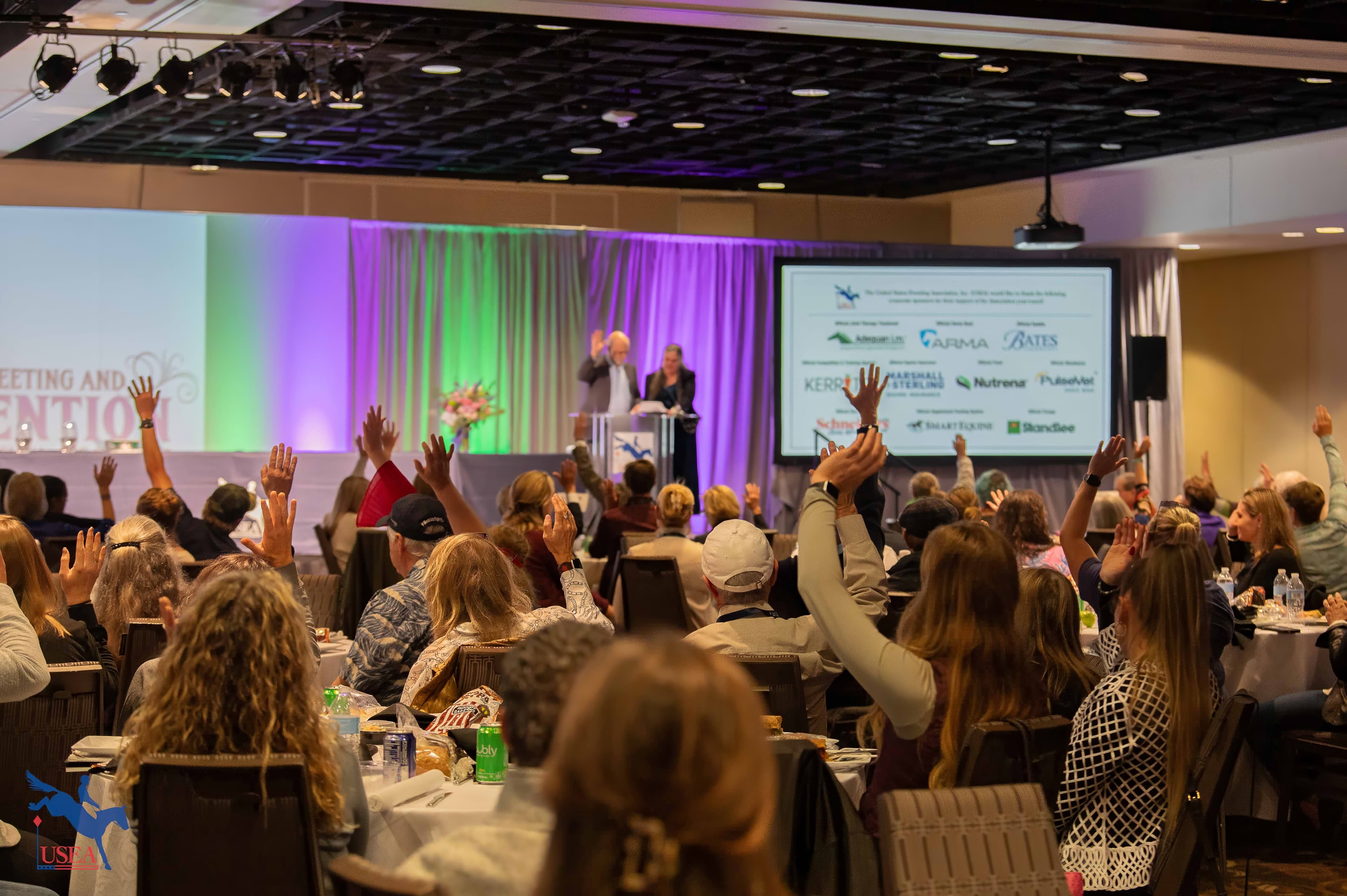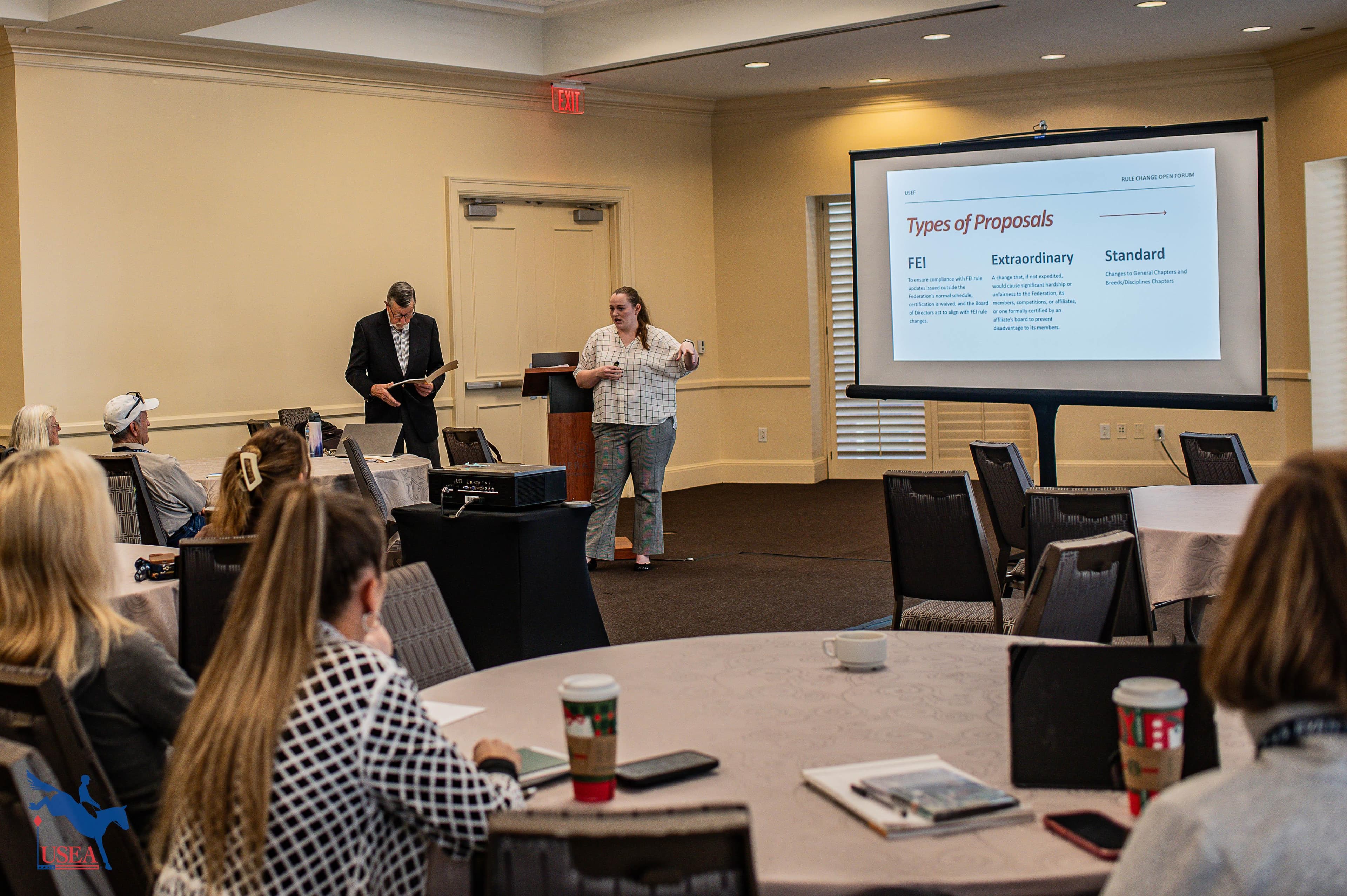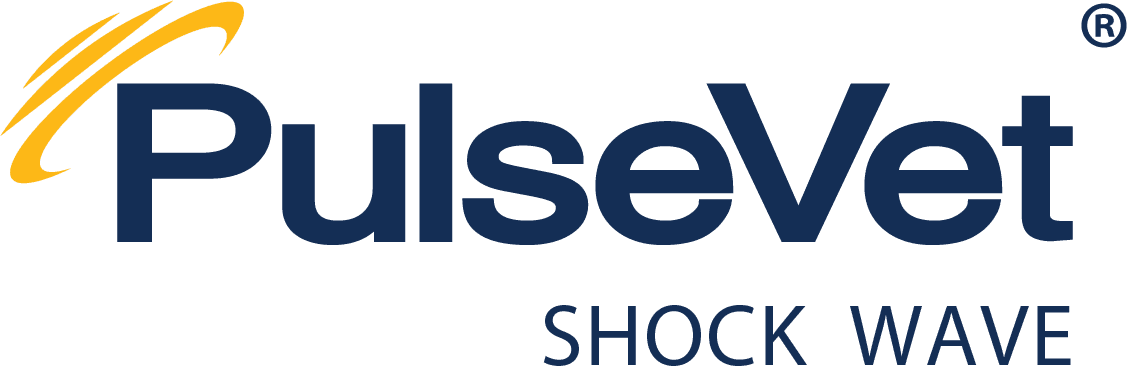USEA Board Of Governors Mid-Year Meeting Recap
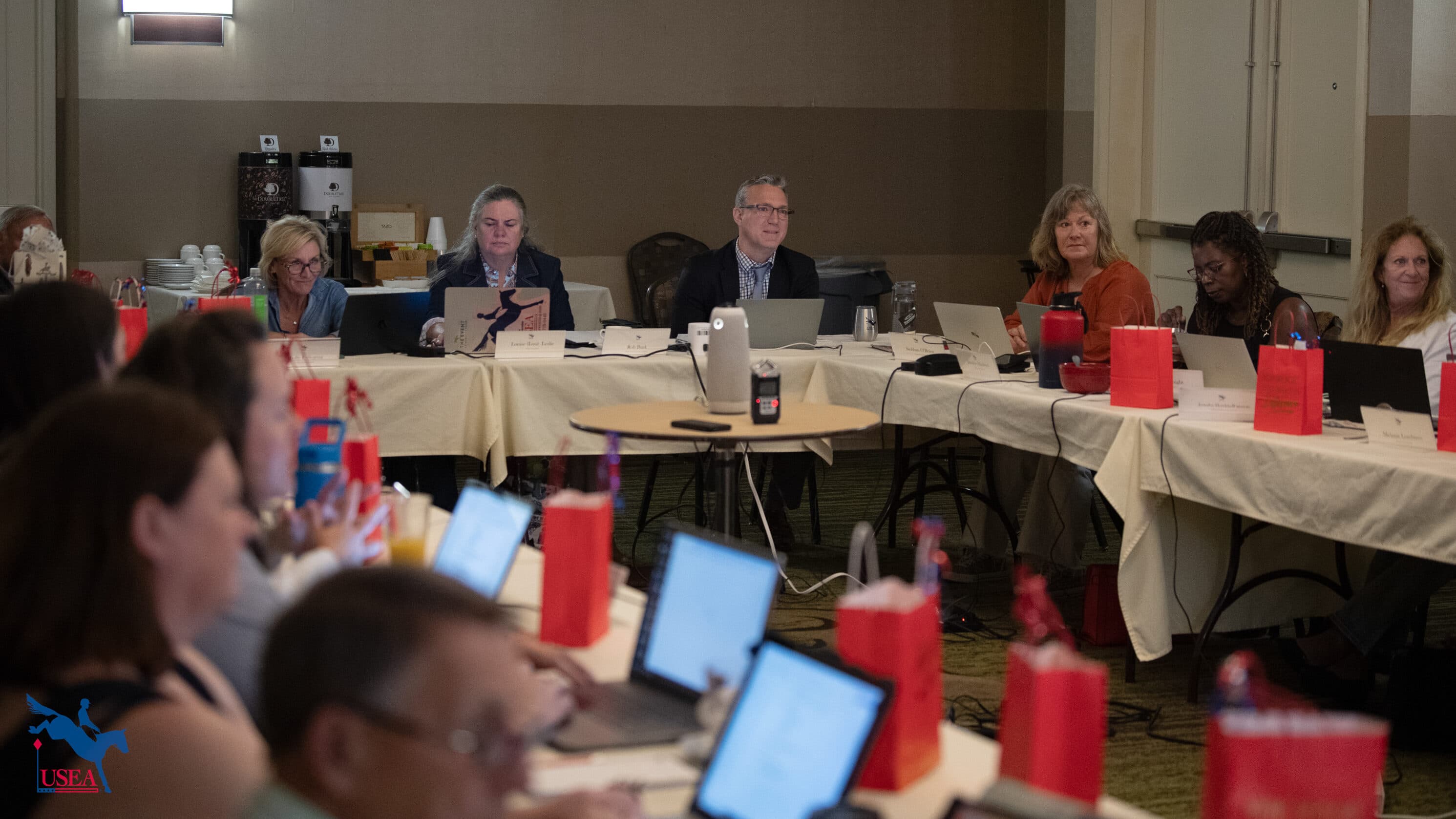
The U.S. Eventing Association’s 21-member Board of Governors (BOG) meets regularly to discuss rule changes, budgets, safety, competition, and more, and each August they convene in Virginia in person for the mid-year BOG meeting.
This year’s meeting was held Aug. 5-6 in Dulles, Virginia, and the major topics included key budget cuts and the USEA’s trends in membership, events, and starters. The BOG will meet in person next at the USEA Annual Meeting & Convention in New Orleans, Louisiana, from Dec. 11-14.
“I think, of all of our Board of Governors meetings, this is actually the most important one we have,” said USEA CEO Rob Burk. “It's where we cover the most content, but also, we make the decisions for the next year. Sometimes I think our members get a little surprised by the fact that we do things like budget planning in the summer of the previous year, but we have to do that to be a well-run, well-managed organization. [The BOG] have to make really tough decisions about policy and about the future—things that they have been gaining insight from our members and from the committees for the past year, and then they bring their own expertise to the table.”
President Lou Leslie began the meeting, her final mid-year Board meeting as President, reminding attendees why the Board exists—to advocate for the membership, from grassroots to organizers to volunteers, in the face of challenges ranging from over-regulation and fees to rising costs, safety, and growing membership.
“This Board isn't just the buckle for show; we are the belt that holds it up. In the spirit of that metaphor, [you] hear me say all the time, don't be all buckle, no belt. Let's tighten our belts. This year, the financial realities that we face means that we have to make some tough decisions today and tomorrow. This may include cutting funding to programs that have merit but perhaps don’t reach equity or sustainability as we prioritize this time. These choices are not taken lightly. That's why it's vital for us to remain authentic to our base of the sport—the grassroots, riders, organizers, volunteers who keep our sport alive. Governing means listening to everybody and leading for the many.”
USEA CEO Rob Burk added that he’s enjoyed working with Leslie, who is an amateur rider, throughout her tenure. “Lou cares more for this sport than anybody I know, and more specifically, she cares for this organization and this Association, and it's deep in her heart,” he said. "Some of the things that I know that she might not entirely get the credit for that she deserves since she came in has been focusing on easing access to sport on all levels, especially in areas of the country where during the year you don't have access to the sport. Lou has created a structure that, in my opinion, better conveys the opinions and the thoughts of the committees directly to the Board, without any sort of breakdown in communication. So that's been really pivotal. And I think we're better for it for the future.”
After thanking Leslie for her work, Burk started his CEO Report by stating that USEA membership is down to 11,500 paid and digital memberships. In particular, junior memberships are down, but adult rider programs are showing strength. The USEA’s Eventing Coaches Program remains steady, and there’s been an increase in those interested in becoming licensed officials. While the downward trend in membership is concerning, the USEA is able to maintain a stable financial position.
The USEA has recently started a partnership with British Eventing, and Burk invited British Eventing CEO Rosie Williams OBE onto the USEA Board meeting via video chat, to engage in a Q&A with USEA Board members, comparing the sport structure in each country. Burk expressed surprise when he found out that BE membership numbers have dropped below USEA’s, despite the perceived popularity of the sport across the pond.
Starters are down 8% this year—the lowest they’ve been since 2007. Venues continue to decline, and finding the next generation of volunteers has been challenging. The bulk of USEA’s revenue comes from starter fees, membership, and events, and the BOG will continue to discuss putting some programs on hold or making cost cuts to them to help rein in spending in the near future.
There will be a strategic planning meeting with the BOG the day before the Annual Meeting & Convention in December to discuss more about how to retain and attract members to sustain the sport.
The USEA Board also reviewed the renegotiation of the current affiliate agreement with U.S. Equestrian Federation (USEF)and is collaborating with them to create a meaningful new agreement that will further elevate the sport and advance the USEA’s mission, while supporting our membership, organizers, and all stakeholders.
Other Business
- A combined test leaderboard concept was approved in the spring by the BOG, though they still need to work out the details such as whether membership would be required, fees, and a point system. Leslie was involved in the DX Eventing concept from several years back, and feels that this is similar to that concept which would engage more people in the sport and develop more of a community.
Whether it’s a rider or horse coming back from an injury, an adult amateur who hasn’t had time to cross-country school but still wants to be a part of the eventing community, or a green rider who’s not yet ready for cross-country but wants to travel to a competition with their barnmates, the combined test leaderboard will give them a place to belong. The concept could come to fruition by 2026, but there is no set date at this time.
- The USEA American Eventing Championships, Intercollegiate, Interscholastic, and Young Event Horse- East Coast Championships are all very successful and continue to see increased interest and participation.
- Many of the USEA’s various programs continue to see increased costs to sustain them, and the Board must continue to evaluate their success, value to the membership, and financial sustainability. The Board has challenged all USEA Committees to determine ways to fundraise and develop revenue-generating initiatives for their programs to be sustainable without negative budget requests.
- There were no major rule changes discussed, but it was noted that 13 dressage tests are being revised, and a Starter test B is in the works.
- The USEA currently has 17 staff members. The Association’s building in Leesburg, Virginia, is 31 years old and will undergo some routine maintenance in the coming months.
- In 2024, the USEA collected $39,030 for equine research in starter fees and restricted donations to put in its Equine Medical Research Fund, which primarily funds the Morris Animal Foundation and The Jockey Club's research grants. This year, The Jockey Club proposed two projects: one about an adhesion model to evaluate tendon injuries by a researcher at North Carolina State University and another on smartphone-based sensors for gait analysis by Melissa King at Colorado State University. The committee also decided to continue funding a partially supported investigation of the immunopathogenesis of EPM study and a Morris study on a team-based study on the approach to monitoring gait symmetry to prevent lameness with farriers, owners, and veterinarians. The proposed budget allocation includes $10,000 for the first project, $9,030 for the second, and $10,000 each for the third and fourth projects.
- The USEA’s ShowConnect software is having a big year. It added the biggest event in the U.S. to its repertoire with The Event at Rebecca Farm (Kalispell, Montana) and assisted in scoring, scheduling, and remote logistics coordination. ShowConnect enabled the registered activity pilot platform this year, which enables unrecognized competitions and activities related to the sport to use the service for entries and scoring.
In all, ShowConnect handled 31 events and 6,788 entries in eight states at 14 facilities in the last 12 months. - Lack of volunteers is a continuous problem for the sport, and the Volunteer Committee proposed a mandatory volunteer requirement to the BOG. Whether it would be for all members, or those just interested in the year-end leaderboard or USEA programs is still being discussed, and there has been no formal proposal. The Committee discussed having a fee if someone did not want to complete mandatory volunteer work, and that fee would potentially go to a grant program that allows organizers to apply for funds to support their volunteers as needed. Some BOG members thought it might create a closer sense of community, while others felt it would create another barrier to entry for new members. Another idea was that for a certain number of volunteer hours, a member could receive a membership to compete at the lowest recognized level, which is Starter.
Looking to the Future
While the sport and the USEA face several issues, including social license to operate, Burk has hope that the USEA will be able to guide it forward.
“The Olympics are coming. We have lots of talk about shrinking, but we have lots of potential for growth in various areas around the country,” he said. “Between that and the passion that you guys and those in the sport bring, I think the potential is endless. You guys know it's easy to sell the love of this sport, and so it’s focusing on this kind of addictive, viral aspect of this sport.”
Leslie added that she feels that the Association will get through this difficult time. “[This meeting] is all about engagement and developing the community and the Board of Governor community, and we have some really awesome people on our Board of Governors that provide such valuable input into what the future of eventing looks like,” she said. “And I'm not worried—we had a tough budget this year, but I’m not worried because we recognize the future, we take the problems head-on, and we don't ignore anything, and we're going to come out of this solid.”

